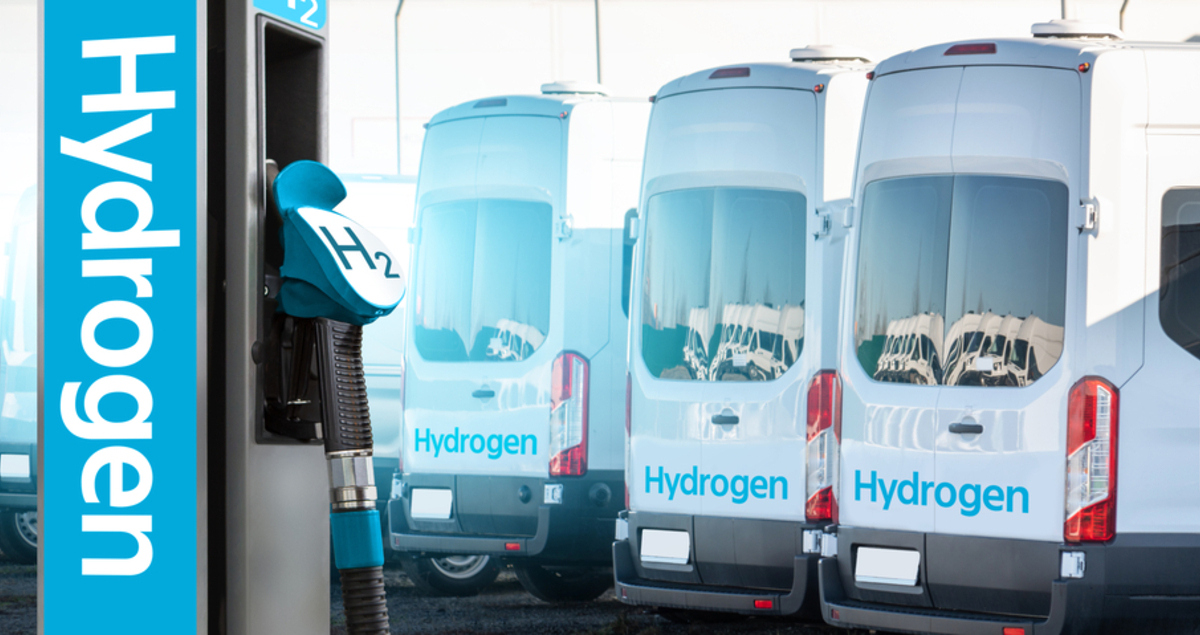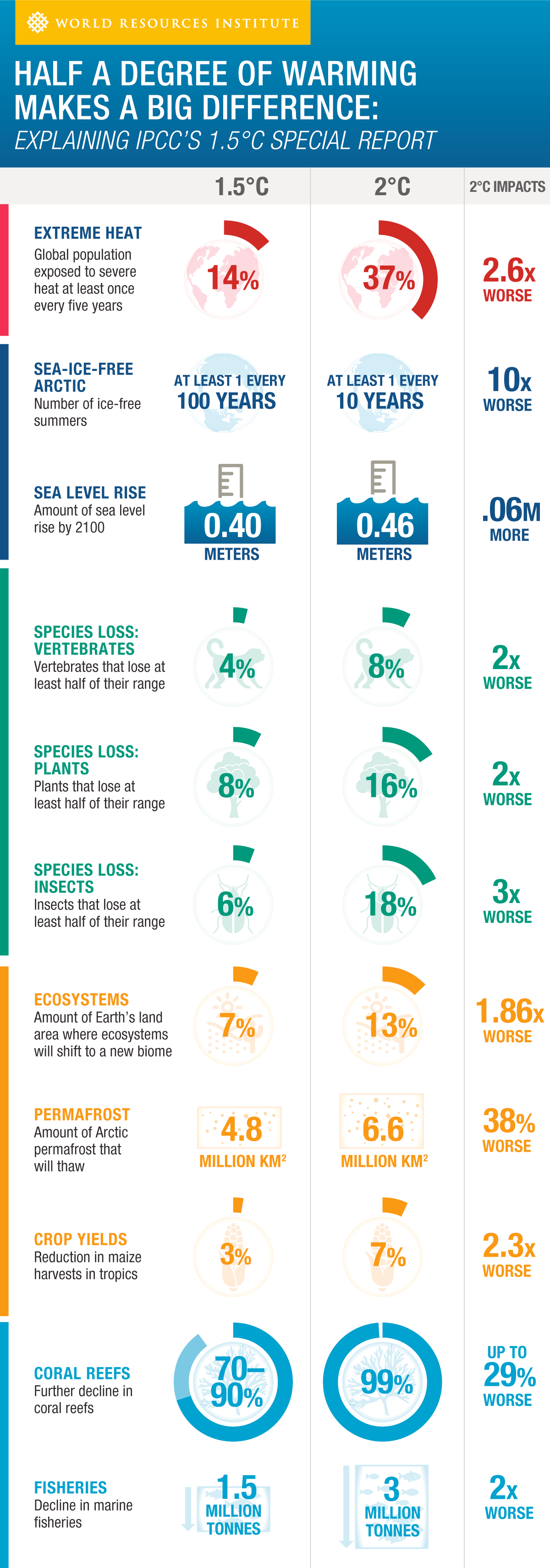1.5°C vs 2.0°C: What’s in half a degree for climate change?

A half-degree rise in temperature may sound minimal. But to our planet, 0.5°C makes the world of difference.
Global temperatures have been rising since the Industrial Revolution, but most rapidly during the 20th century and into the 2000s. There is strong evidence pointing to human activity and greenhouse gases as the main drivers of global warming and climate change.
To stabilize the climate, the Paris Agreement aims to limit global temperature increases to well below 2°C compared to pre-industrial levels, but with a target of 1.5°C by 2050.
Whether we reach 1.5°C or 2°C has dramatic implications for the health of our planet and those living on it. It is therefore not surprising that the Paris Agreement’s target came into focus again at COP26 in Glasgow, with some advocating pursuing the ‘softer’ 2°C target while others reinforced their support for the ‘harder’ 1.5°C target.
Tipping the scales of climate change
A 1.5°C increase will have a substantial impact on the climate. If we let that rise hit 2°C, the impact will be much greater, according to the Intergovernmental Panel on Climate Change (IPCC).
Droughts are already devastating large parts of the world, but if we allow for a 2°C increase, close to three times as many people would be regularly exposed to extreme heat than in a 1.5°C scenario.
At 2°C, the projected rise in sea levels by 2100 increases by 0.06 meters over and above a 1.5°C rise. We would also lose twice as many plants and vertebrate species and three times as many insects.
Marine fisheries would see catches decline twice as much at 2°C – 3 million metric tons – than at 1.5°C. While crop yields, for example for maize, could decline more than twice as much in some areas, threatening food security.
Reining in global warming
Since we’re already at a temperature increase of 1.18°C, it’s clear that even keeping warming below 2°C by 2050 will be a struggle, never mind saving a further half degree.
In its latest report, the IPCC pointed out that, despite all efforts to date, global warming is intensifying. We could well exceed 1.5°C within the next 20 years. The UN report authors have stressed that unless we can realize rapid, large-scale reductions in greenhouse gas emissions, limiting warming to close to 1.5°C or even 2°C will be beyond our reach.
To keep within 2°C, we need to lower CO2 emissions from 2010 levels by a minimum of 25% by 2030, and reach net zero by 2070. To achieve the more ambitious goal of 1.5°C, a 45% reduction on 2010 levels will be needed by 2030, followed by net zero around 2050.
This level of CO₂ abatement will rely on many of the changes brought about by the COVID-19 pandemic becoming permanent. This includes less air travel and commuting, and a slowdown of activity across all business sectors. That’s no mean feat considering that we need to get the world economy back onto a growth path at the same time.
The International Energy Agency (IEA) has already forecast that 2021’s final figures will see a rebound in energy demand overall, and a significant increase in fossil fuel consumption compared to that of all renewables combined.
Countries with a continued commitment to fossil fuels will have to find different approaches, including new technologies to hit these elevated carbon abatement targets.
Technology to fight global warming
Shouldering these challenges will depend on deploying net zero technologies effectively and at scale.
However, the IEA predicts in its Net Zero By 2050 report that existing or planned policies for the energy transition – captured by the agency’s “Stated Policies Scenario” – would only result in marginal improvements. Despite a substantial ramp up in renewable energy generation and a downward trend for coal, the agency expects natural gas supply to continue growing significantly and oil to plateau over the next three decades.
To reach net zero CO₂ emissions by 2050 – the agency’s “Net Zero Emissions by 2050 Scenario” – the share of renewables in total electricity generation globally will need to increase from 29% in 2020 to over 60% in 2030, and to nearly 90% in 2050.
Having such high proportions of intermittent renewable electricity in the power mix will only be possible through substantial scaling-up of energy storage solutions.
Alongside this, hydrogen and carbon sequestration – such as carbon capture, utilization and storage (CCUS) and direct air capture (DAC) – will be even more critical on the path to 1.5°C.
Additionally, a value chain for captured CO₂ needs to be established. Good examples of this are its use as a raw material for the chemical sector, in carbon-reinforced concrete, as well as its conversion to carbon black for industry or to make proteins for animal feed and for agriculture.
Meanwhile, first blue and then green hydrogen are expected to become competitive with gray (fossil-derived) hydrogen by the early 2030s. This will add to their attractiveness both to current users of hydrogen and to those exploring new applications: hydrogen could complement or replace natural gas used in power generation, industrial processes and transportation.

Keeping climate change in check – a $50 trillion opportunity
Carbon pricing is another lever governments can apply to aid climate change abatement. Energy analysts Wood Mackenzie recommend a ‘step change’ in carbon pricing by raising it to up to $160 per metric ton of CO2 by 2030. Currently, the cost of carbon in the European Union Emissions Trading System, for example, is around €63 ($72) per metric ton (as at 15 November 2021).
But it’s not all about sticks – penalizing the offenders – it’s also about carrots.
That’s because getting on the 1.5°C trajectory is a substantial investment opportunity. Wood Mackenzie puts it at a minimum of $50 trillion, ranging from building out new energy capacity, creating sufficient energy storage, developing electrolyzers for green hydrogen and the surrounding infrastructure.
This is as much of an opening for the investment community as for bigger industry players such as the oil majors or large infrastructure companies, for example. But for this ‘carrot’ to work, the onus will be on governments to set up supportive regulatory frameworks and incentives to kick-start and de-risk the market, especially for decarbonization technologies that are still in their infancy.
Half a degree can make a dramatic difference and these players took steps toward the 1.5°C pathway at COP26, according to the IEA’s updated announced pledges scenario. But these projections also suggest a lot more will need to be done to move us closer to the mark.

Discover more about: MHI Group’s energy transition strategy





